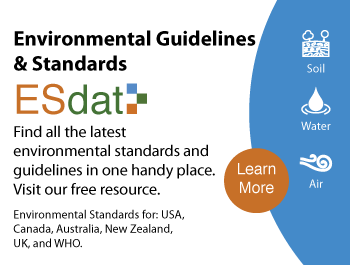British Columbia Protocol 10 allows for developing water quality standards for cadmium and zinc and is applied in specific sites to protect freshwater aquatic life. The protocol provides a table containing precalculated and preapproved water quality standards for water hardness up to 500mg/L. The Canadian Council of Ministers of the Environment (CCME) provides cadmium and zinc standards, while Protocol 10 allows modifications to meet site-specific needs.
The purpose of Protocol 10 guidelines is to allow for limited modifications to be done on the scheduled numerical standards provided under the Contaminated Sites Regulation. It is applied to determine whether a site is contaminated and also a contaminated site underwent successful remediation. The ministry can only approve objective and quantitative standards instead of subjective or qualitative rationale.
Protocol 10 for contaminated sites provides two methods for deriving freshwater aquatic life protective site-specific water standards for zinc and cadmium. These are Calculations and the Lookup Table. The calculation method for water hardness of 500mg/L or above considers Schedule 6 aquatic life standards, sampling and analytical requirements, and appropriate equations. The Lookup Table is applied for water hardness less than 500mg/L and compares site-specific values with precalculated standards.
British Columbia Protocol 10 protects aquatic life and freshwater uses such as irrigation, livestock and drinking. It, therefore, protects the environment and human health. Additionally, it contributes to the ministry’s goals, such as identifying contaminated sites and developing and implementing remediation initiatives.
British Columbia Protocol 10 for Contaminated Sites can be found on the ESdat website. All compiled environmental guidelines and standards are shown. These are pre-loaded into ESdat Online.

ESdat is a single repository for storing, analyzing and reporting your environmental investigation and monitoring data. ESdat validates and imports data from laboratories, data loggers, field apps and spreadsheets. Users can filter and view data using the built-in graphing, mapping, tabulation, statistical and report generation tools. Increasing efficiency and confidence in the data are cited as key benefits by organizations using ESdat.
ESdat Online delivers a highly cost-effective and efficient approach to store your ongoing monitoring environmental data, optionally with a historical data upload provided as a getting started service. ESdat Online is perfect if you want a cloud-based system that collates and reports your ongoing laboratory and field results.
ESdat Server provides the advantages of ESdat Online with the option of adding ESdat Desktop for data experts to upload their historical data, effectively interrogate the raw data being used within the database, and automatically launch and send data to other Desktop Applications such as Surfer, ArcGIS and Excel.
A variety of complementary products are also available to help with related work, such as sample planning and electronic Chain of Custody (LSPECS), offline field data collection or bore logging (pLog), production of bore logs (ESlog), public portals and customized reporting.
References
British Columbia (2002). Protocol 10 for contaminated sites. Retrieved from https://a100.gov.bc.ca/pub/eirs/finishDownloadDocument.do?subdocumentId=1956






